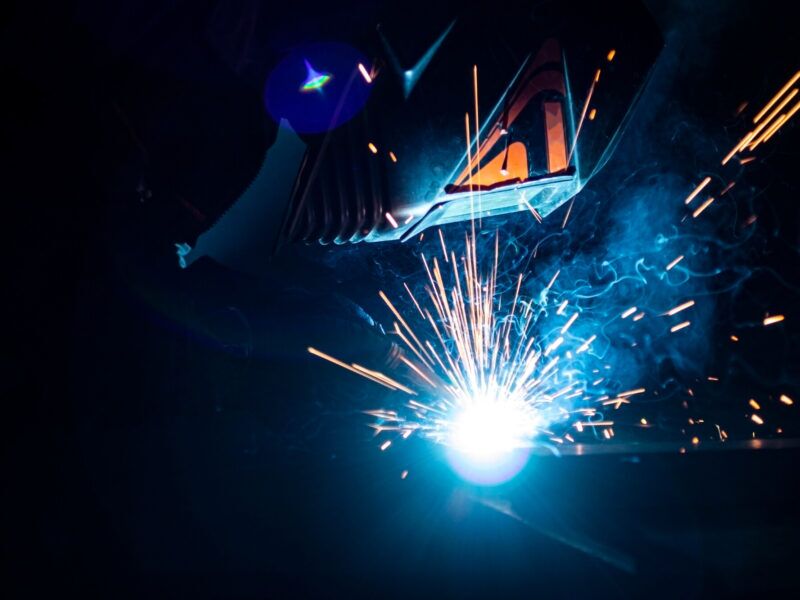Understanding the Art of Welding: How to Stay Clear Of Undercut Welding Issues for Flawless Construction Results
By understanding the origin triggers of undercut welding and carrying out efficient methods to prevent it, welders can raise their craft to new degrees of excellence. In the pursuit of perfect manufacture results, mastering the art of welding to stay clear of undercut concerns is not simply an ability yet a necessity for those striving for perfection in their job.
Understanding Undercut Welding

To prevent undercut welding, welders ought to make certain correct welding parameters, such as adjusting the current, voltage, travel speed, and keeping the correct electrode angle. By understanding the reasons of undercut welding and applying precautionary actions, welders can accomplish premium, structurally sound welds.
Sources Of Undercut in Welding
Comprehending the aspects that add to damage in welding is important for welders to create top quality, structurally audio welds. Undercutting takes place when the weld metal does not properly fill the groove created between the base metal and the formerly transferred weld steel. Several factors can cause damage in welding. One common reason is extreme warm input. Welding at high temperatures for extensive periods can cause the base metal thawing more than wanted, causing undercut. Poor welding present or inaccurate welding speed can likewise add to undercut. Inadequate current may not supply sufficient warmth to melt the base and filler metals adequately, while extreme rate can avoid appropriate blend, causing undercut. Furthermore, inappropriate electrode angles or inaccurate lantern control strategies can develop locations of low weld steel deposition, promoting undercut. Understanding these causes and executing appropriate welding strategies can assist avoid undercutting problems, making sure solid and resilient welds.
Techniques to Prevent Undercutting

To mitigate the risk of undercutting in welding, welders can employ calculated welding methods aimed at improving the high quality and integrity of the weld joints. One efficient technique is to change the welding specifications, such as voltage, existing, and take a trip speed, to make sure proper warm input and deposition. Keeping an appropriate electrode angle and making sure consistent travel rate can also help protect against undercut. Furthermore, using the correct welding technique for the certain joint configuration, such as weave or stringer beads, can add to decreasing damaging. Preventing weld undercut.
In addition, appropriate joint preparation, including making certain tidy base products complimentary of pollutants and using the suitable welding consumables, is essential in protecting against undercut flaws. Employing back-step welding strategies and controlling the weld bead account can also aid distribute warm evenly and lessen the threat of undercut. Normal inspection of the weld joint throughout and after welding, as well as executing quality control actions, can assist in addressing and spotting damaging problems quickly. By implementing these strategies vigilantly, welders can accomplish remarkable construction results with minimal undercut defects.
Relevance of Correct Welding Specifications
Choosing and keeping ideal welding parameters is essential for achieving successful welds with minimal issues. Welding specifications describe variables such as voltage, present, travel rate, electrode angle, and protecting gas circulation price that straight influence the welding procedure. These specifications should be very carefully adjusted based on the sort of product being bonded, its density, and the welding strategy used.
Correct welding parameters make certain the best amount of heat is related to melt the base metals and filler product uniformly. If the criteria are set too expensive, it can cause excessive heat input, triggering burn-through, distortion, or spatter. On the other hand, if the criteria are also low, incomplete blend, absence of infiltration, or undercutting may take place.
Quality Control in Welding Workflow

Verdict
To conclude, mastering the art of welding calls for an extensive understanding of undercut welding, its reasons, and methods to stop it. By guaranteeing proper welding specifications and applying top quality assurance techniques, remarkable fabrication results can be attained. It is important for welders to constantly make every effort for excellence in their welding operations to avoid undercut problems and create premium welds.
Undercut welding, a typical problem in welding processes, happens when the weld metal does not properly fill the groove and leaves a groove or clinical depression along the welded joint.To prevent undercut welding, welders need to make certain appropriate welding parameters, such as readjusting the current, voltage, traveling rate, and preserving the right electrode angle. Insufficient welding present or incorrect welding rate can likewise add to undercut.To alleviate the risk of explanation damaging in welding, welders can employ calculated welding techniques aimed at improving the high quality and integrity of the weld joints.In verdict, grasping the art of welding needs a comprehensive understanding of undercut welding, its reasons, and techniques to avoid it.
Comments on “Effective Ways to Prevent Weld Undercut in Your Welding Jobs”